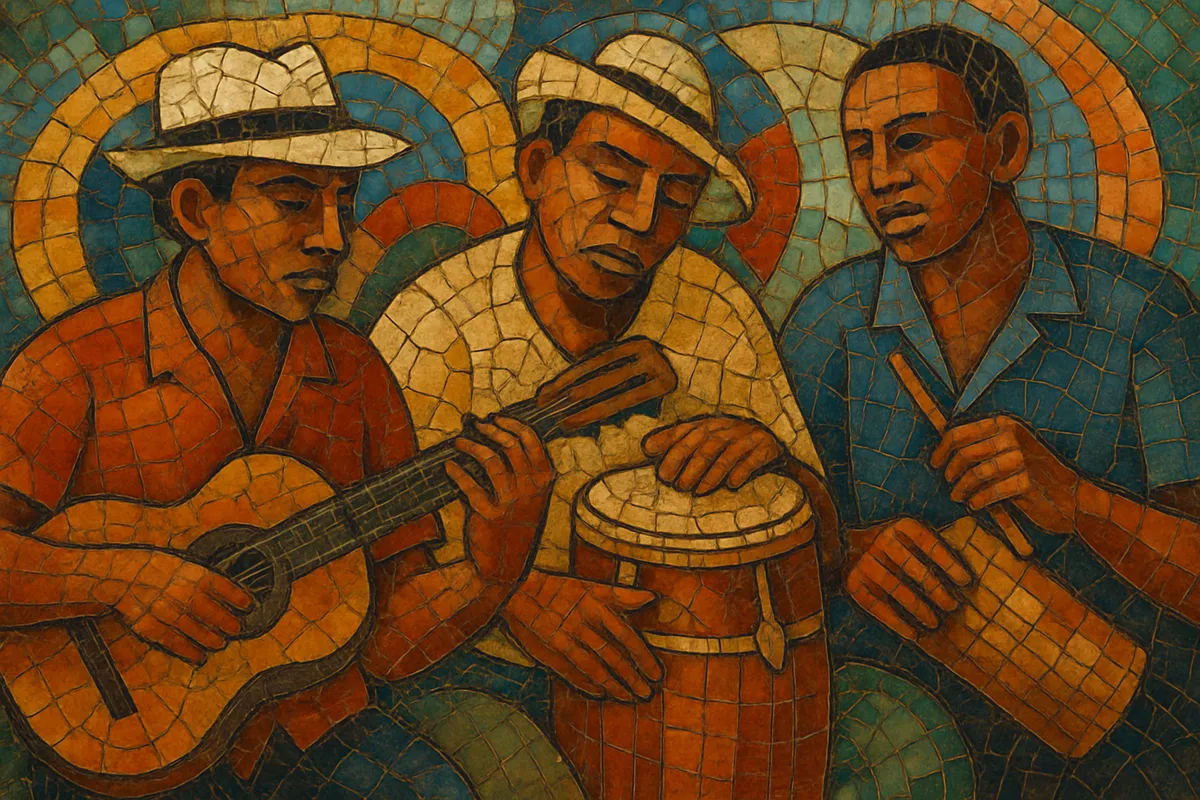
Changüí is a rural Afro-Cuban genre that emerged in the eastern province of Guantánamo. It is a lively, dance-driven music that predates and directly informs son cubano.
Typical ensembles feature the Cuban tres (providing guajeos/montunos), marímbula (a plucked lamellophone acting as the bass), bongó de monte (a rustic bongo with driving martillo patterns), and the guayo (a metal scraper whose steady, sparkling texture locks the groove). Vocals are organized around call-and-response between an improvising lead singer (pregón) and a chorus (coro), often using witty, topical, or improvised verses.
Rhythmically, changüí leans on syncopations related to the tresillo and cinquillo, creating a forward-leaning, propulsive feel in duple meter. Harmonically it favors simple, vamp-like I–V or I–IV–V loops in major or mixolydian modalities, leaving space for percussive interplay and vocal improvisation. The overall effect is raw, communal, and celebratory, with strong ties to agricultural dances and local festivities.
Changüí arose in the mid-19th century among rural communities in and around Guantánamo, especially the mountains and sugar-growing zones. It developed at house parties and farm gatherings, blending African-descended rhythmic practices with Spanish-campesino song traditions and improvisation.
The core lineup—tres, marímbula, bongó de monte, guayo, and voices—was shaped by what was available in rural settings: portable, durable, and often home-made instruments. Songs typically begin with verses then move into an extended montuno featuring call-and-response, improvised pregones, and intertwined rhythmic ostinatos.
Changüí is widely recognized as a direct ancestor of son cubano. As musicians traveled between Guantánamo, Baracoa, and Santiago de Cuba, changüí’s textures and song forms fed into early son ensembles, eventually spreading westward and urbanizing in the early 20th century.
While urban son and later salsa eclipsed it commercially, Guantánamo ensembles kept changüí alive. The formation and long-running work of groups like Grupo Changüí de Guantánamo helped codify repertoire and style. From the 1960s on, figures such as Elio Revé drew on changüí to create new hybrids, keeping its sound audible in mainstream Cuban dance music.
Changüí enjoys a sustained revival through festivals (notably the Festival Nacional del Changüí in Guantánamo), documentation projects, and collaborations with son, timba, and jazz musicians. Contemporary groups continue to emphasize its communal dance function and rustic timbre while expanding its harmonic palette.

